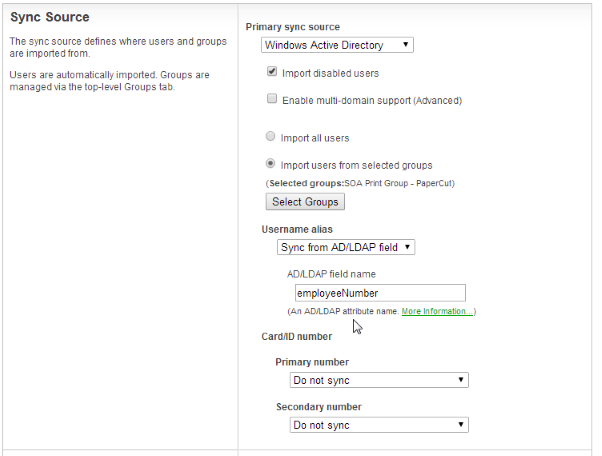In some scenarios, a particular user wants to print a job but his/her username has been changed for various reasons and it is reflected in PaperCut now as a different username. Examples of why the username may have changed:
Two networks/domains/servers have different naming conventions, e.g. for user John Smith, one network uses the convention "j.smith" while the other uses "jsmith".
For some policy reasons, the format of usernames has changed and you want to allow forgetful users to log in with their previous username.
Print jobs are coming from an ERP or mainframe system where usernames are different.
In some organizations, users log in with employee numbers.
Print jobs coming from some software packages may use the "application username" and not the user's network username used by PaperCut. This can occur in some SAP configurations.
Unix has strict requirements for usernames, (IEEE Std 1003.1–2001), where the only valid characters are letters, digits, underscores, full stops, at-signs, dashes (but not start with a dash) and having $ at the end. So when printing on a Unix server, it can sanitize the username, such as converting an apostrophe into an underscore, and then recording in PaperCut as a different user when one really wants it to be the same user.
To work around this problem PaperCut allows users to have an alias for their username. The username alias is applied at the following levels:
User login to the web interface, client popup authentication, or release station login.
Print jobs arriving in the print queues under the alias.
Username aliasing can be enabled via →
Once username aliasing has been enabled, you will see a new text field on the User Details page.
Now this user in Figure 6.12, “Username alias field on the User Details page. ”, can log into PaperCut using "anne" or "afh27" and can send jobs under the username "anne".
This information can be automatically imported from Active Directory or LDAP during an overnight sync. Once username aliasing is enabled, an option to enter an AD/LDAP field name appears under → . Any valid Active Directory user field can be chosen to import this information. For example: employeeNumber, employeeID, otherLoginWorkstations.
Once this has been set, information from this Active Directory field will be imported every night as username aliases. For more information on user group synchronization see the section called “User and Group Synchronization”.


